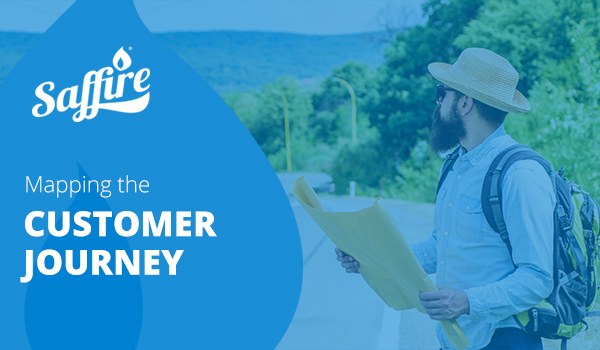A customer journey map is a visual representation of the process a customer takes with a company. For the purpose of ticketing, the map begins when a person is initially made aware of available tickets and concludes after the ticket has been used for entry. All the steps in between are interactions or experiences that make up a customer journey map.
The Purpose of a Customer Journey Map
If everyone who had heard of tickets bought one, you wouldn’t need to worry about the customer journey! Since this isn’t the case, mapping out the customer journey and gathering feedback on the different touchpoints to better understand guest behavior. A customer journey map is also key for your marketing team to identify the tone and content that should be communicated depending on the stage of the journey.
Customer journeys are specific and based on actual experience, so take the time to collect feedback from guests to have a clear grasp on the patron’s journey to purchasing tickets. Is the customer journey too long? Is it too confusing? You may be surprised why people are abandoning their carts early
What are the stages of a customer journey?
There are five defined states of your customers’ buying journey: awareness, consideration, purchase, retention and advocacy.
- Awareness: The first touchpoint of a journey! The customer is looking for a fun event to attend themselves or with their family and becomes aware of your brand, typically on social media or through an online search. Once awareness has been reached, it’s time to nurture that in the next phase.
- Consideration: During the consideration phase, the customer will evaluate your offerings to competitors. Perhaps they’re considering your event, a nearby concert, a street festival and a fair for their day of fun. Highlight why they should attend your event (show pictures of families having fun or the delicious food they might find) while addressing potential pain points (tickets can be bought in advance or in a bundle for a discounted price).
- Purchase/Decision: With all the info gathered from the previous two phases, the customer makes their decision and purchases their ticket.
- Retention: Now that this potential customer has become an official patron of your event, it’s important to keep them engaged through email marketing, loyalty programs, special promotions, etc. throughout the year so when your event rolls around again, they are ready to buy tickets!
- Advocacy: If a customer has an easy time purchasing tickets to your event, they can turn into some of your biggest advocates! They’ll tell their family and friends how simple it was to purchase in advanced, skip the line and get into the event in a just a few minutes.
Mapping the Customer Journey
One of the first steps to mapping and evaluating the customer journey is by gathering feedback on how their ticket-buying experience went. This could be done by talking to guests in-person at your event, leaving out comment cards for patrons to fill out, or sending a post-event survey to gauge satisfaction.
You should also consider going on the journey of buying your tickets yourself! Google your event and navigate to the page to purchase tickets. Could you easily find it if you didn’t know where to look? Once you selected the ticket, was the purchase easy to complete? And how was the ticket delivered to you? Just like the customer, your next step will be getting to the front gate with your ticket. Were there extremely long lines to enter? Were attendants able to scan your ticket? How quickly were you able to enter the event?
Answering these questions, collecting feedback from guests and mopping out the customer journey will help you identify pain points, improve communication and sell more tickets.
